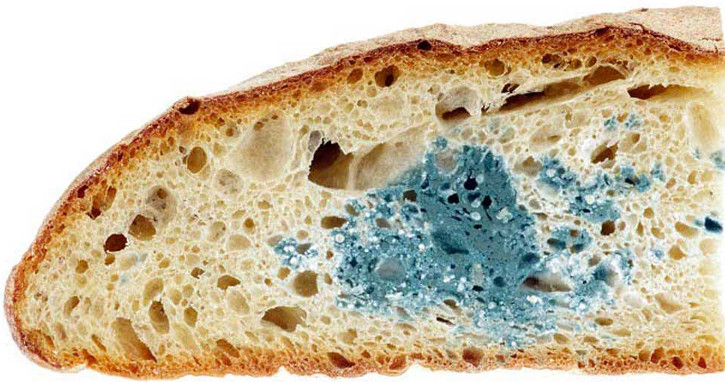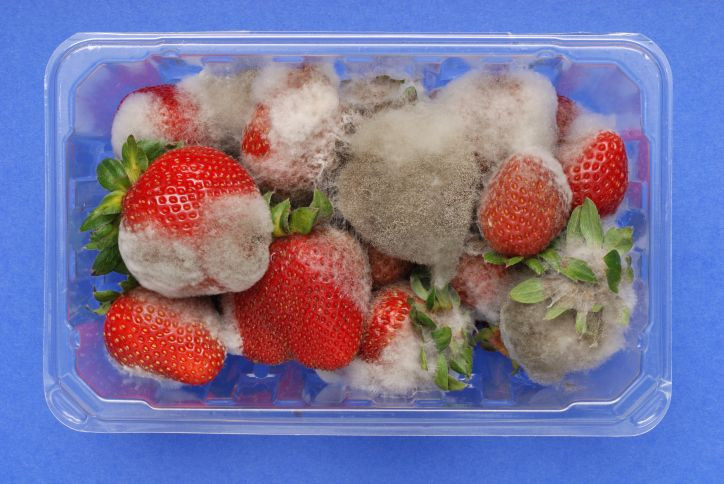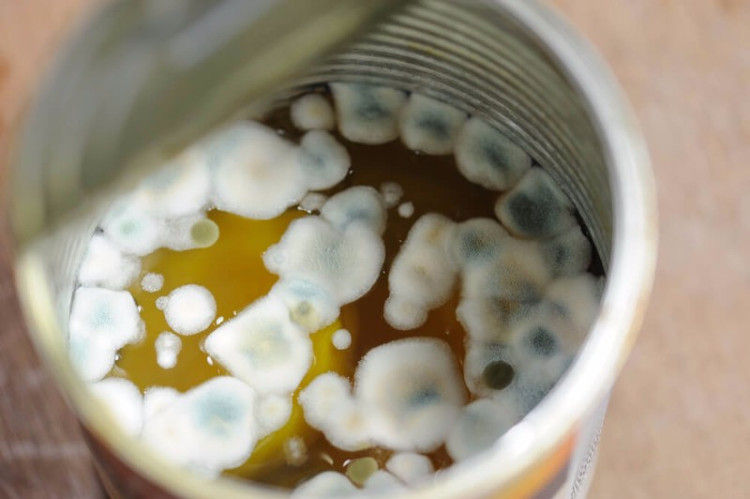Is mold food safe?
Is molded food safe for eating?
This can happen to all of us: the fresh peaches that you love to eat are suddenly blurred. Or the bread of the previous days started with a few small blue spots. Often when food meets this phenomenon, we often throw it away. But can we cut off the mold and enjoy the rest of peaches or slices of bread?

Is this moldy bread still edible?
According to Howstuffworks, mold on the surface of food often appears as a white or green area. It may appear on all food surfaces or only partially. While mold growth seems to only occur on the surface, mold is a fungus that has a structure similar to a tree, stem and spore. The roots, often invisible to the naked eye, can grow quite deep. The stalks and spores are what you see on the surface. Spores can spread in the air. It is the cause of mold on current objects, as well as spread to food on the side.
You've heard the phrase "a bad apple ruins a whole box". Usually if mold grows on a piece of food, it quickly spreads to nearby foods.

If mold grows on a piece of food, it will quickly spread to nearby foods.
Not all mold is harmful. Some cheeses, such as Roquefort, are tinted green like "veins" . To achieve this quality, manufacturers introduced a type of edible mold during the production process. The finished cheese is completely safe to eat even though they have a characteristic flavor that is not swallowed by anyone.
However, other types of mold may cause problems. Some cause an allergic reaction or cause effects on the respiratory system, which is why you should not smell moldy foods. And some types of mold create toxic substances called mycotoxins , which can cause serious illness.

Some types of mold create toxic substances called mycotoxins.
Because of its soft texture and high moisture content, it is possible that mold cells have spread to parts of food that you cannot see. It is safer to put this amount of food in a digester instead of eating it to get sick.
For complete and up-to-date instructions on safe food, visit the US Department of Agriculture website. But what is below is a quick summary of molded food:
Although not all mold foods must be put in the trash , some of them should not be consumed. This usually applies to most soft and moist foods, because mold can grow deeper into the product after it appears on the surface. For example, throw these items if you see mold: meat of lunch, bacon, hot dog, cooked casseroles, cooked cereals or pasta, peanut butter, beans, nuts, soft cheese , yogurt and ice cream.

For hard fruits and vegetables, food can be consumed after you trim the mold.
Jams and jellies should also be removed when signs of mold are detected, as they may contain mycotoxins . Finally, moldy and bread-baked products should also be thrown - do not trim parts that are not green to eat as this is not safe either.
Although slices of cold meat and meat of molded lunch should be removed, hard salami and dried pork are the exception; For these items, you can safely sweep the surface, completely removing mold.
For hard cheeses, hard fruits and vegetables, food can be consumed after you trim the mold. Be sure to trim at least 1 inch (2.51cm) around the mold area and clean the knife if it has come in contact with mold (because it may have been contaminated with mold cells).
You may be disappointed if you have to remove all the food that has been contaminated with mold but be aware that this is a safe decision for your health.
- Food packaging anti-mold
- Are moldable foods removed, can you eat away the mold: 3 types of mustard must be thrown away
- When to throw food in the refrigerator
- Mushrooms in rice and corn make HIV more fertile
- Mold (Aspergillus) - Doctor of fermentation
- Distinguish edible and non-edible mold
- Instructions on how to choose safe food, avoid poisoning
- Eating banh chung is moldy and prone to cause cancer
- Dirty, re-cooked foods can cause more than 200 different diseases
- Steps to handle food safety
- It will be dangerous if you deliberately eat these foods with signs after Tet
- Fossilized pig mold in amber 30 million years
 Green tea cleans teeth better than mouthwash?
Green tea cleans teeth better than mouthwash? Death kiss: This is why you should not let anyone kiss your baby's lips
Death kiss: This is why you should not let anyone kiss your baby's lips What is salmonellosis?
What is salmonellosis? Caution should be exercised when using aloe vera through eating and drinking
Caution should be exercised when using aloe vera through eating and drinking